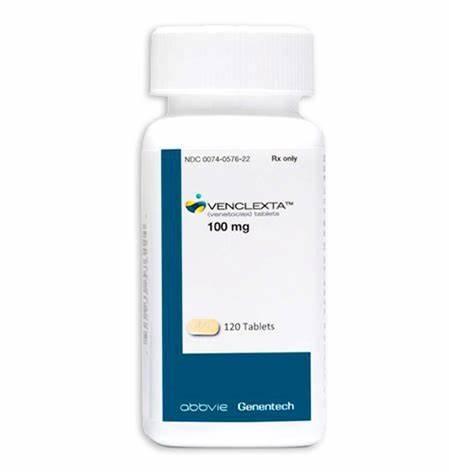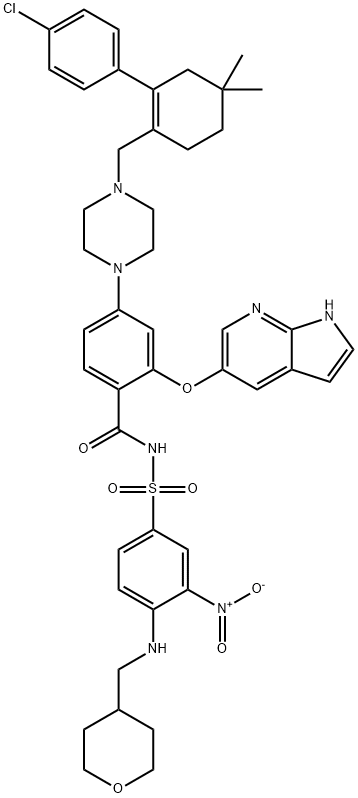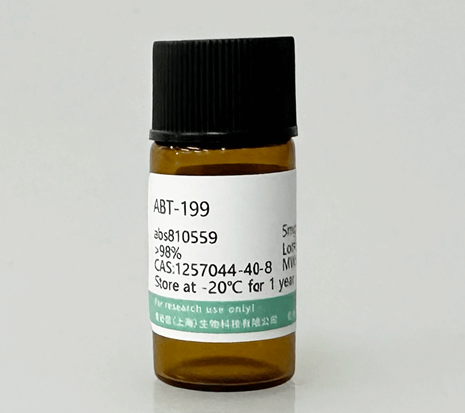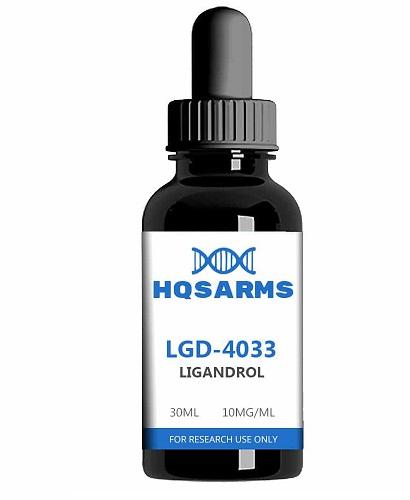Venetoclax mechanism of action
Venetoclax, sold under the brand names Venclexta and Venclyxto, is a medication used to treat adults with chronic lymphocytic leukemia (CLL), small lymphocytic lymphoma (SLL), or acute myeloid leukemia (AML).
The most common side effects are low levels of neutrophils (a type of white blood cell), diarrhea, nausea, anemia (low red blood cell counts), nose and throat infection and tiredness.
Venetoclax attaches to a protein called Bcl-2.This protein is present in high amounts in CLL cancer cells, where it helps the cells survive for longer in the body and makes them resistant to cancer medicines. By attaching to Bcl-2 and blocking its actions, venetoclax causes the death of cancer cells and thereby slows down progression of the disease.

Medical uses
In the US, venetoclax is indicated for adults with chronic lymphocytic leukemia (CLL) or small lymphocytic lymphoma (SLL).Indication does not depend on mutation status (e. g. 17p deletion, IGHV mutation, 12+).
In the EU, venetoclax monotherapy is indicated for the treatment of chronic lymphocytic leukaemia (CLL) in the presence of 17p deletion or TP53 mutation in adults who are unsuitable for or have failed a B cell receptor pathway inhibitor and for the treatment of CLL in the absence of 17p deletion or TP53 mutation in adults who have failed both chemoimmunotherapy and a B cell receptor pathway inhibitor.
Other types of leukemia
Venetoclax is also indicated as part of a combination therapy for acute myeloid leukemia (AML).For this purpose it is used with azacitidine, decitabine, or low-dose cytarabine for newly diagnosed adults who are age 75 years or older, or those with other health problems where intensive chemotherapy cannot be used.
Side effects
Common side effects of venetoclax include neutropenia (low white blood cell count), nausea, anemia, diarrhea, upper respiratory tract infection, fatigue, and thrombocytopenia (low platelet count). Major side effects include tumor lysis syndrome and severe neutropenia. Additionally, this drug may cause fertility problems in males.
Pharmacology
Mechanism of action
Venetoclax is a BH3-mimetic.Venetoclax blocks the anti-apoptotic B-cell lymphoma-2 (Bcl-2) protein, leading to programmed cell death of CLL cells. Overexpression of Bcl-2 in some lymphoid malignancies has been linked to increased resistance to chemotherapy.
Pharmacokinetics
The maximum plasma concentration achieved after oral administration occurred 5–8 hours after dose.Steady state maximum concentration with low-fat meal conditions at the 400 mg once daily dose was found to be 2.1 ± 1.1 μg/mL. It is recommended that venetoclax be administered with a meal.
The apparent volume of distribution for venetoclax is approximately 256–321 L. It is highly bound to human plasma protein. Within a concentration range of 1-30 μM (0.87-26 μg/mL), the fraction unbound in plasma was less than 0.01.[3]
Venetoclax is metabolized by CYP3A4/5 as proven by in-vitro studies.Those using the drug should not consume grapefruit products because they contain CYP3A inhibitors.Additionally, while using venetoclax it is not recommended to use other drugs which contain CYP3A inhibitors (i.e.: erythromycin, ciprofloxacin, diltiazem, dronedarone, fluconazole, verapamil).Venetoclax is excreted from the body via the fecal route.
You may like
Related articles And Qustion
Lastest Price from ABT-199 manufacturers

US $0.00-0.00/kg2025-08-22
- CAS:
- Min. Order:
- 1kg
- Purity:
- 99%
- Supply Ability:
- 1

US $0.00/kg2025-06-07
- CAS:
- 1257044-40-8
- Min. Order:
- 1kg
- Purity:
- 98%
- Supply Ability:
- 1000kg





